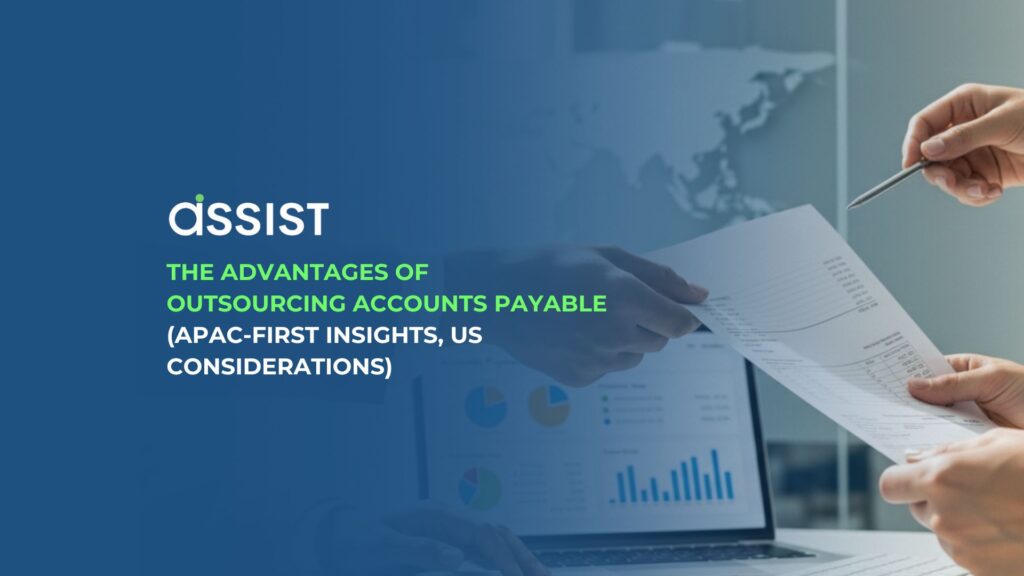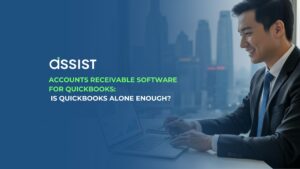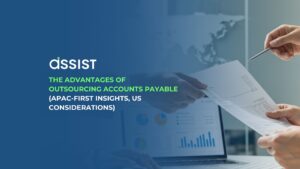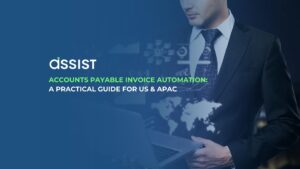If you want the short answer to the advantages of outsourcing accounts payable, here it is. You can lower cost per invoice, shorten cycle times, cut exceptions, improve on time payments, and strengthen compliance while keeping approvals and payments in house. APAC teams gain added lift from Peppol and evolving e invoicing mandates, and US teams benefit from standardized onboarding and audit ready trails. Stay with me until the end so we can walk through the KPIs, decision framework, risks, and an implementation plan you can use immediately.
TL;DR. What you gain by outsourcing AP
Outsourcing AP reduces cost per invoice, accelerates cycle times, lowers exception rates, increases on time payments, and improves visibility. It also strengthens controls such as segregation of duties and audit trails. When a provider already understands APAC e invoicing and connects cleanly to Xero or QuickBooks, you can achieve speed to value without giving up oversight.
What outsourcing AP includes, and what stays in house
A practical AP outsourcing scope typically includes:
- Invoice intake from email, portal, EDI, Peppol, and scans with AI or OCR capture
- Supplier validation and 2 or 3 way match against POs and receipts
- Exception handling and vendor query resolution
- Duplicate and fraud checks with policy validation
- Batch preparation for approvals and payment runs
- Vendor master updates with documentation checks
What usually stays internal. policy setting, budget ownership, final approvals, treasury decisions, and the actual payment execution. For an end to end view of how these tasks connect, see the high level solution overview, the detailed features and benefits, or the step by step how it works explainer.
Quantified benefits with a KPI table
Finance leaders buy outcomes, not adjectives. Use the ranges below as a starting point for your RFP and service level negotiations.
| KPI | Typical Baseline, in house manual | Target With Outsourcing | Why it Matters |
| Cost per invoice | Higher due to labor and rework | Lower via scale, automation, steady utilization | Frees budget for value add work |
| Cycle time, receipt to approval | Multi day lag, month end spikes | Faster with standardized routing and reminders | Captures early payment discounts |
| Exception rate | Frequent errors, missing POs, data issues | Lower with structured intake and validation | Cuts rework and supplier friction |
| On time payment percentage | Inconsistent | Higher with tracked SLAs | Reduces late fees, strengthens terms |
| Early payment discount capture | Low due to delays | Higher with predictable throughput | Direct savings |
| DPO stability | Volatile when approvals stall | More predictable | Better working capital planning |
If approvals are your main bottleneck, the primer on building an invoice approval workflow is a useful companion, and the broader blog covers specific AP pain points.
APAC compliance and e invoicing advantages
APAC is diverse, so regional alignment matters.
- Peppol for AU, SG, and NZ. Structured exchange reduces manual keying and format drift, which typically lowers exceptions and improves supplier experience. If you are new to it, start with how the Peppol network works and a practical view of InvoiceNow in Singapore.
- Malaysia e invoicing momentum. Phased adoption and MyInvois infrastructure are top of mind. Outsourcing centralizes format compliance, QR and data validations, and change management so your internal team does not chase each policy update. For business focused guidance, see the plain English overview of e invoice in Malaysia and the practical Malaysia e invoicing FAQ.
The net effect is simple. You keep policy and approvals inside the business, while a partner handles the volatile, format heavy work.
US considerations in brief
For US entities or teams handling US vendors:
- Standardize vendor onboarding, W 9 collection, and TIN verification
- Clarify 1099 data capture, payment terms, and invoice policy checks
- Maintain segregation of duties and retain final approvals and payments in house with complete audit trails
These steps mirror the APAC approach. Your provider standardizes intake and validation, and you retain financial authority.
Decision framework. Outsource, automate, or go hybrid
Use these ranges as a starting point, then tune them to your environment.
Volume heuristic per month
- Fewer than 300 invoices. start with automation inside your finance app.
- 300 to 800 invoices. hybrid is often ideal. outsource intake and exceptions, keep approvals and payments in house.
- More than 800 invoices or multi entity complexity. outsourcing becomes compelling for scale, continuity, and coverage.
Complexity signals that favor outsourcing
- Exception rate above 8 to 10 percent
- Multi entity or multi currency operations, frequent cross border suppliers
- Tight close timelines with limited headcount
If you want to see common roles and use cases, explore who uses Assist, including pages for business owners and for bookkeepers.
ROI model with a simple calculator
A quick way to estimate ROI.
Formula, annualized
Savings is approximately.
(Baseline cost per invoice minus New cost per invoice) multiplied by annual volume
plus (Rework hours avoided multiplied by fully loaded hourly rate)
plus (Early payment discounts newly captured)
minus (Service fees and one off change costs)
Worked example, illustrative
- Baseline. 7.50 dollars per invoice multiplied by 24,000 invoices equals 180,000 dollars
- Target with outsourcing. 4.20 dollars per invoice multiplied by 24,000 equals 100,800 dollars
- Rework avoided. 900 hours multiplied by 35 dollars equals 31,500 dollars
- Discounts captured. 20,000 dollars
- Fees and one off. 28,000 dollars
Net first year impact is approximately 102,700 dollars
To align expectations with market norms and budgeting, review the transparent pricing page.
Risks, controls, and SLAs
Outsourcing improves outcomes when you surface and control risk.
- Loss of control. Mitigate with clear RACI, dual approvals, and step in rights
- Security and privacy. Require encryption at rest and in transit, access logging, DLP, and audited controls. For validation, see public certifications, the site privacy policy, and terms and conditions
- Vendor lock in. Negotiate exportable process documentation, data portability, and exit criteria
- Service drift. Bake in SLAs such as 48 hour turnaround or better, at least 99.5 percent field level accuracy, exception aging caps, and a quarterly business review
- Stakeholder concerns. Maintain a living internal FAQ. You can model the tone on this public facing FAQ
Implementation timeline and change management, weeks 1 to 6
A pragmatic plan keeps momentum and builds trust.
- Week 1, discovery and mapping. Document volumes, formats, exception types, approval rules, and integrations
- Week 2, pilot. Move a subset of invoices and measure cycle time and accuracy
- Weeks 3 to 4, integrations and approvals. Connect to your accounting platform, finalize routing, and clean vendor masters. If you use Xero or QuickBooks, see integration with Xero and integration with QuickBooks, plus a focused walkthrough for QuickBooks
- Week 5, parallel run. Run in house and outsourced lanes side by side, compare KPIs, and fine tune exception workflows
- Week 6, go live and first QBR. Shift traffic, lock SLAs, and schedule your first quarterly review. If you plan a trial, preview steps in the short guide to signing up for a trial
Readiness checklist and RFP question set
Readiness checklist
- Monthly invoice volume and seasonality
- Percentage PO based vs non PO invoices
- Exception rate and top three causes
- Approval layers and average time per layer
- Entities, currencies, and tax treatments, GST or VAT vs sales tax
- ERP or accounting stack and any side systems
RFP question set
- Security and compliance. SOC 2 or ISO 27001 scope, audit dates, data residency options, PII handling, background checks
- Process depth. 2 or 3 way match coverage, duplicate detection, vendor master governance
- Technology. OCR or AI models used, confidence thresholds, exception triage, reporting
- Staffing model. Coverage hours, language capability, escalation paths
- KPIs and SLAs. Turnaround time, accuracy definition, exception aging, reporting cadence, remediation
- Change management. Training approach, documentation, transition and exit plan
You can find further how to material in the curated Assist Guides.
Micro case snapshots for APAC industries
Construction in Australia. A mid market builder with seasonal peaks centralized intake and 3 way match with an external team. Standardized PO matching lowered late payment fees and improved on time payment percentage. For a similar operational story in a different sector, see the food manufacturing case on automated approvals and data entry in this AP case study.
Retail in Singapore. A multi store retailer consolidated invoice ingestion from email and Peppol, reduced cycle times, and captured more early payment discounts through scheduled approvals. For a distributed operations example, the fire and security industry case shows how exception control tightens outcomes.
Healthcare in Malaysia. A clinic group aligning to Malaysia e invoicing shifted validation to a partner with strong policy monitoring. Exception rates fell as format checks and QR validations moved upstream, which raised compliance confidence while clinicians focused on care.
Integrations and workflow fit
Outsourcing should not replace your accounting system. It should feed it. Intake, capture, and exception work push clean, validated invoices into your ERP or accounting software, while your approval policies remain the source of truth.
- Xero users can skim the dedicated integration with Xero overview, and there is also a short explainer at Text Xero
- QuickBooks users can review the QuickBooks integration page and the product walkthrough for QuickBooks
- For scoping questions on volumes, formats, and SLAs, open a thread via the contact page
Conclusion. How to choose confidently
If your AP pain is mainly volume and variation, outsourcing buys throughput, consistency, and coverage. If your pain is policy clarity and approvals, start with automation and better workflow, and consider a hybrid model for exceptions.
APAC teams benefit when the provider operates inside Peppol or InvoiceNow and tracks Malaysia rules. US teams benefit when onboarding and approvals are standardized without giving up financial control. For a deeper, non sales peek, read the step by step view of how it works or the structured book a demo path.
When you are ready to try it hands on, register and use Assist free by starting here. Create your account.



